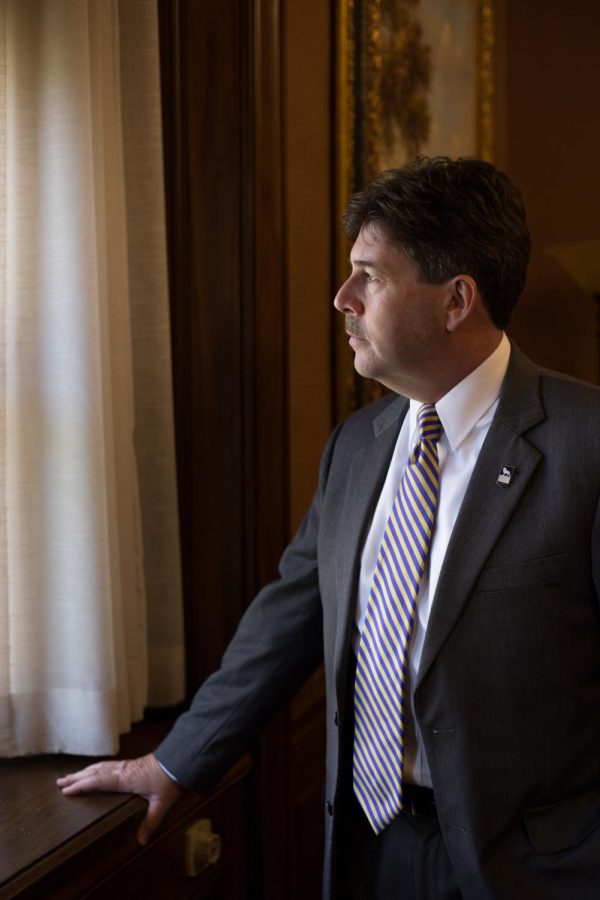UNA officials predict another enrollment increase
April 14, 2016
The record freshman class of 2015 sparked new hope and growth at UNA, and university officials said they think that growth will continue.
For the first time in five years, enrollment reached over 7,000 students last fall. This increase is the beginning of another “peak” in the life of UNA, said President Kenneth Kitts.
“I think there is so much here that has already been accomplished that we can be proud of,” Kitts said. “And yet, I just get the sense that there is an energy building around UNA and that we can work together and attain even bigger and better and greater things.”
Kitts said he has focused on tracking enrollment factors since coming to UNA last year. Keeping track of where the university is now and where it was this week a year ago is important to planning for the next academic year, he said.
“(It) makes a lot of sense to track it because that’s our budget,” he said. “That’s our single largest source of revenue these days is students paying tuition and fees. How in the world can you plan a budget for the upcoming year if you have no idea how many students (are coming)?”
Some of these enrollment factors include the number of applicants, accepted applicants, registered students for student orientation and registration and reserved rooms in the residence halls.
Kitts said the number of transfer and freshman applications are up right now compared to last year.
Right now, Mattielou and Olive halls are over 90 percent full, said Director of University Residences Kevin Jacques.
The popularity of the freshman halls caused the administration to begin planning for the future of housing on campus, said Vice President of Student Affairs David Shields.
“I know we are going to spend a lot of time over the next six to eight months really working very diligently on the next plan for us,” he said. “We are operating on speculative data. All signs early on indicate very positive things for us when it comes to students living in the halls.”
While new students are beneficial for the university, Kitts said an even better sign is the retention rate, or how many students return to UNA after their freshman year.
“In a lot of ways, I think that’s better news than the freshman numbers because that tells you not only that we’re attracting students, but once they’re here, they’re happy with what UNA has to offer,” he said.
Retention rates for the first-year freshman cohort has been rising since 2011 despite the decline in overall enrollment, according to statistics from the Office of Institutional Research, Planning and Assessment. Kitts said he thinks retention will rise with enrollment next year.
Kitts said expected enrollment increase fell short after UNA created the 2010 master plan.
The plan predicted a 40 percent increase in enrollment by 2020. That prediction would put UNA close to a 10,000-member campus, he said.
“When people have asked me about our long-term enrollment, I want us to continue to grow because growth is good, but I want it to be manageable growth,” he said.
“I think there’s something very unique and beautiful about the size of UNA that I want to protect.
“There’s a personal quality to the education here. There’s intimacy and friendliness to the campus here that you lose when you’re a school of 20,000. I’d rather us grow very deliberately in order to protect what makes UNA, UNA.”
Junior Calla Hill transfered to UNA from Alabama A&M this spring. She said her telecommunications professors recommended UNA.
“Plus, the campus is beautiful and it’s far enough away from my parents so I feel like I’m getting a true college experience,” Hill said.


